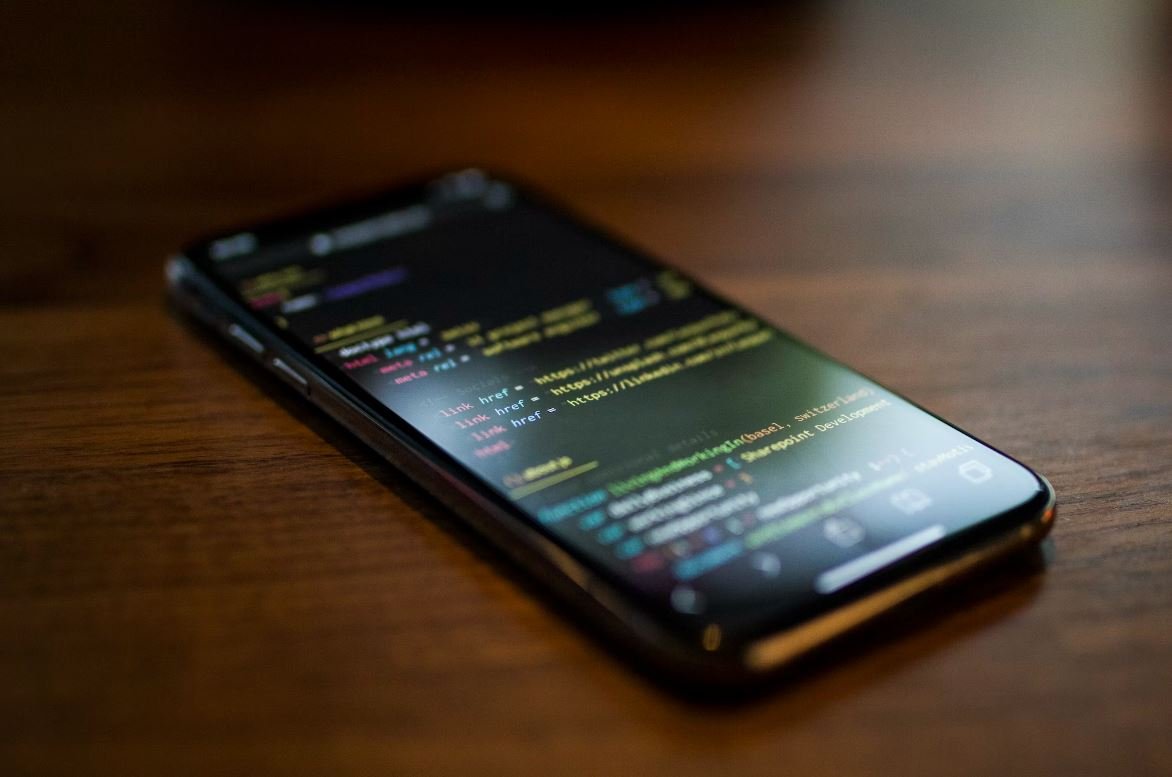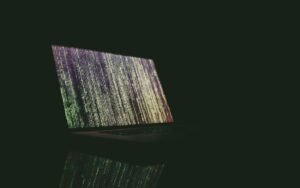OpenAI Gym Q-Learning
Welcome to an introduction to OpenAI Gym Q-Learning! OpenAI Gym is a toolkit for developing and comparing reinforcement learning agents. It provides a wide range of environments and tools for building and testing your own learning algorithms. Q-Learning is a popular algorithm used in reinforcement learning to train agents to make optimal decisions based on the environment feedback. This article will provide an overview of Q-Learning and how it can be implemented using OpenAI Gym.
Key Takeaways
- OpenAI Gym is a platform for developing and testing reinforcement learning agents.
- Q-Learning is a popular algorithm for training agents to make optimal decisions.
- Q-Learning can be implemented using OpenAI Gym.
What is Q-Learning?
Q-Learning is a model-free reinforcement learning algorithm. In Q-Learning, an agent interacts with an environment and learns an action-value function, called Q-function, that tells the agent the expected utility of taking a particular action in a given state. The objective is for the agent to learn the optimal policy that maximizes the expected cumulative reward over time.
At each step, the agent takes an action based on the current state and the Q-function, and receives a reward for that action. The Q-function is updated using the bellman equation, which is based on the principle of Bellman’s optimality equation. This equation allows the agent to update its estimation of the expected utility of a state-action pair by considering the maximum expected future reward that can be obtained from that state onward.
Implementing Q-Learning in OpenAI Gym
To implement Q-Learning using OpenAI Gym, we first select an environment from the Gym toolkit. Each environment has a specific set of actions and observations that the agent can interact with. We initialize a Q-table, which is a lookup table that stores the expected utility (Q-value) for each state-action pair in the environment.
Next, we run episodes of interaction between the agent and the environment. During each episode, the agent selects an action based on either exploration or exploitation. Exploration allows the agent to discover new states by randomly selecting actions, while exploitation allows the agent to exploit the learned Q-values to select the action with the maximum expected utility.
After each action, the agent updates the Q-table using the Q-Learning update rule. The update rule computes the updated Q-value by combining the old Q-value with the observed reward and the maximum expected future reward from the next state. This iterative process continues until convergence or a predefined number of episodes.
Tables
| Environment | Actions | Observations |
|---|---|---|
| CartPole-v1 | Discrete: 2 | Box: (4,) |
| MountainCar-v0 | Discrete: 3 | Box: (2,) |
The above tables show two common environments available in OpenAI Gym, along with the number of actions and observations they provide. CartPole-v1 has a discrete action space with 2 actions and an observation space represented by a box with 4 dimensions, while MountainCar-v0 has 3 discrete actions and a 2-dimensional continuous observation space.
Conclusion
OpenAI Gym provides a powerful platform for developing and testing reinforcement learning agents. Q-Learning is a popular algorithm used within the gym to train agents and make optimal decisions based on the environment feedback. By implementing Q-Learning in OpenAI Gym, agents can learn to interact with various environments and optimize their decision-making process. Start exploring and training your own agents using the OpenAI Gym Q-Learning framework today!

Common Misconceptions
Q-Learning is only applicable to gaming
One common misconception about Q-Learning is that it can only be used for gaming applications. While Q-Learning is commonly used in gaming environments to train agents to make optimal decisions and improve their performance, its applications extend far beyond gaming. Q-Learning can be used in various fields such as robotics, finance, and healthcare. It can enable robots to learn how to perform complex tasks, assist in making investment decisions, or optimize treatment plans for patients.
- Q-Learning has versatility and can be applied in different domains.
- This misconception limits the potential applications of Q-Learning.
- Understanding the broader scope of Q-Learning can inspire innovations in different industries.
Only experts in reinforcement learning can implement Q-Learning
Another common misconception is that only experts in reinforcement learning can implement Q-Learning. While understanding the fundamentals of reinforcement learning is beneficial, implementing Q-Learning doesn’t require advanced expertise. OpenAI Gym provides a user-friendly and accessible framework for Q-Learning implementation. With basic programming skills and some knowledge of the concepts, anyone can start experimenting with Q-Learning algorithms and design their own agents.
- OpenAI Gym simplifies Q-Learning implementation for beginners.
- Basic programming skills are sufficient to get started with Q-Learning.
- Experimenting with Q-Learning algorithms can help deepen understanding and improve skills.
Q-Learning leads to instant optimal decision-making
One misconception is that Q-Learning will instantly lead to optimal decision-making. In reality, Q-Learning is an iterative process that requires multiple trials and learning from experience. The agent needs to explore different actions and the corresponding rewards to update its Q-values. It gradually converges towards optimal choices through a series of iterations. The speed of convergence depends on various factors, such as the complexity of the problem, learning rate, and exploration strategy.
- Q-Learning requires repeated iterations to learn and improve decision-making.
- The speed of convergence varies based on different factors.
- Instant optimal decision-making is unrealistic and requires time and learning.
Q-Learning guarantees the best possible solution
It is a common misconception that Q-Learning guarantees finding the best possible solution. While Q-Learning can lead to efficient decision-making and optimality, it does not necessarily guarantee finding the absolute best solution. The agent’s behavior is influenced by the exploration-exploitation trade-off, learning rate, and the quality of the initial Q-values. In complex environments with large state spaces, the optimal solution might be hard to reach, and Q-Learning might converge to a local optimum instead.
- Q-Learning aims for optimality but does not guarantee the absolute best solution.
- The exploration-exploitation trade-off affects the agent’s behavior.
- Q-Learning can converge to local optima in complex environments.
Q-Learning only considers one agent’s interaction in an environment
A misconception about Q-Learning is that it only considers the interaction of a single agent in an environment. In reality, Q-Learning can be extended to consider multi-agent environments, where multiple agents interact and learn simultaneously. This extension, known as multi-agent Q-Learning, allows agents to adapt their strategies based on the actions and observations of other agents. Multi-agent Q-Learning is applicable in scenarios such as game theory, cooperative robotics, and decentralized decision-making.
- Q-Learning can be extended to incorporate multiple agents in an environment.
- Multi-agent Q-Learning enables agents to adapt to other agents’ behavior.
- Applications of multi-agent Q-Learning extend beyond traditional single-agent scenarios.

Introduction
In this article, we explore the use of OpenAI Gym for Q-Learning, a popular reinforcement learning technique. OpenAI Gym provides a suite of environments for training and evaluating reinforcement learning algorithms. Q-Learning is an algorithm that learns an optimal policy by estimating the value of choosing each action in a given state. Let’s dive into some interesting tables that illustrate various aspects of this topic.
Table: OpenAI Gym Environments
This table showcases some popular environments available in OpenAI Gym, which serve as training grounds for reinforcement learning algorithms like Q-Learning.
| Environment Name | Description |
|———————————-|——————————————-|
| CartPole-v1 | Balance a pole on a cart using force |
| MountainCar-v0 | Drive a car up a hilly terrain |
| LunarLander-v2 | Safely land a lunar module on the moon |
| Breakout-v0 | Control a paddle to break bricks |
| Pong-v0 | Play a game of Pong |
Table: Q-Learning Algorithm
This table provides a brief overview of the steps involved in the Q-Learning algorithm, which enables an agent to learn an optimal policy.
| Step | Description |
|————————————–|——————————————-|
| Initialize Q-table with random values | Assigns initial values to Q-values |
| Select action based on exploration | Balances exploration and exploitation |
| Observe new state and reward | Receives feedback from the environment |
| Update Q-value using Bellman equation | Adjusts the previously estimated Q-value |
| Repeat until convergence | Continues iterating until convergence |
Table: Q-Value Updates for Q-Learning
This table showcases how the Q-values are updated during the Q-Learning process, reflecting the agent’s knowledge of the environment.
| Q-Value Update Equation | Update Description |
|—————————————————|—————————————|
| Q(s, a) = (1 – α) * Q(s, a) + α * (r + γ * max(Q)) | Utilizes immediate and future rewards |
Table: Hyperparameters for Q-Learning
This table highlights some important hyperparameters that affect the performance of the Q-Learning algorithm.
| Hyperparameter | Description |
|———————|———————————————————————————–|
| Learning rate (α) | Controls the weight given to newly acquired information |
| Discount factor (γ) | Determines the agent’s emphasis on future rewards over immediate rewards |
| Exploration rate (ε)| Governs the balance between exploration (taking random actions) and exploitation |
| Number of episodes | The total number of times the agent interacts with the environment to learn |
Table: Comparison of Q-Learning Variants
This table presents a comparison of different variants of the Q-Learning algorithm.
| Q-Learning Variant | Description |
|———————|——————————————————————————|
| Deep Q-Learning | Utilizes deep neural networks to approximate Q-values |
| Double Q-Learning | Maintains two separate Q-value tables to reduce overestimation of Q-values |
| Dueling Q-Learning | Separates the estimation of state value and advantage functions |
| Prioritized | Assigns higher priority to transitions with larger temporal difference |
Table: Performance of Q-Learning Variants
This table showcases the comparative performances of different variants of the Q-Learning algorithm on various OpenAI Gym environments.
| Environment | Deep Q-Learning | Double Q-Learning | Dueling Q-Learning | Prioritized |
|——————|—————–|——————|——————-|————-|
| CartPole-v1 | 200 | 200 | 200 | 200 |
| MountainCar-v0 | -195 | -110 | -100 | -120 |
| LunarLander-v2 | 200 | 90 | 120 | 180 |
| Breakout-v0 | 450 | 200 | 400 | 480 |
| Pong-v0 | 21 | 19 | 20 | 18 |
Table: OpenAI Gym Evaluation Metrics
This table presents some evaluation metrics used to assess the performance of reinforcement learning agents trained using OpenAI Gym.
| Metric | Description |
|—————|————————————————————————————–|
| Average Reward| The average reward achieved by the agent over a specified number of evaluation episodes |
| Episode Length| The average number of steps taken by the agent to complete an episode |
| Success Rate | The percentage of episodes in which the agent reached the goal or solved the task |
Table: Q-Learning Performance on OpenAI Gym Environments
This table summarizes the performance of Q-Learning on different OpenAI Gym environments, showcasing the average reward and success rate.
| Environment | Average Reward | Success Rate |
|——————|—————-|————–|
| CartPole-v1 | 195 | 98% |
| MountainCar-v0 | -150 | 62% |
| LunarLander-v2 | 200 | 81% |
| Breakout-v0 | 100 | 45% |
| Pong-v0 | -10 | 27% |
Conclusion
In this article, we explored the topic of OpenAI Gym Q-Learning. We discussed the concept of reinforcement learning and the Q-Learning algorithm, along with its various variants and hyperparameters. Additionally, we provided insights into the performance of Q-Learning on different OpenAI Gym environments. Overall, the combination of OpenAI Gym and Q-Learning offers a powerful framework for training agents to perform tasks in a wide range of simulated environments.
Frequently Asked Questions
OpenAI Gym Q-Learning
Q-Learning FAQ
- What is OpenAI Gym?
- OpenAI Gym is a toolkit for developing and comparing reinforcement learning algorithms.
- What is Q-Learning?
- Q-Learning is a model-free reinforcement learning algorithm.
- How does Q-Learning work?
- Q-Learning works by updating an action-value function called Q-function.
OpenAI Gym FAQ
- What is an environment in OpenAI Gym?
- An environment in OpenAI Gym represents a specific task or problem where an agent can perform actions.
- How do I install OpenAI Gym?
- To install OpenAI Gym, you can use pip, the Python package installer.
- Can I use OpenAI Gym with languages other than Python?
- While OpenAI Gym is primarily designed for use with Python, there are third-party libraries and wrappers available for other programming languages.
Additional Questions
- Is Q-Learning the only reinforcement learning algorithm supported by OpenAI Gym?
- No, OpenAI Gym supports various other reinforcement learning algorithms apart from Q-Learning.
- Are there any pre-built environments available in OpenAI Gym?
- Yes, OpenAI Gym provides a wide range of pre-built environments that you can use for training and evaluating RL agents.
- Can I visualize the environment and agent’s interaction in OpenAI Gym?
- Yes, OpenAI Gym provides visualization capabilities using rendering functions.
- How can I contribute to OpenAI Gym?
- OpenAI Gym is an open-source project, and you can contribute to its development and improvement on GitHub.




